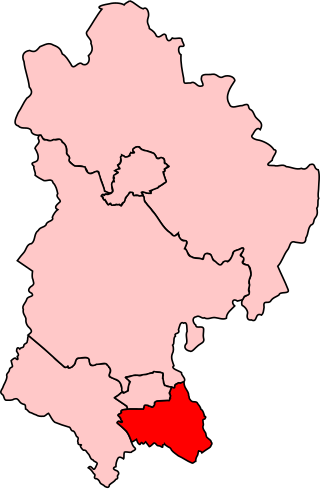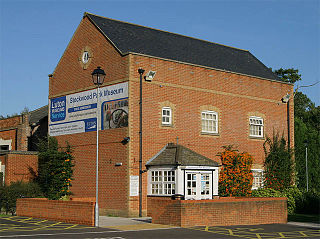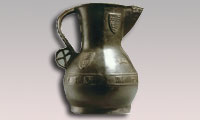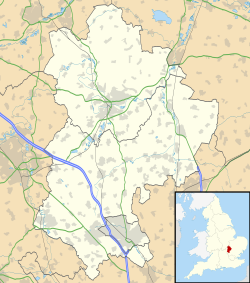
Luton is a town and unitary authority with borough status, in Bedfordshire, England. The 2021 census gives the population of the Borough of Luton as 225,262 and the population of the Luton/Dunstable urban area as 286,450.

Bedfordshire is a ceremonial and historic county in the East of England. It is bordered by Northamptonshire to the north, Cambridgeshire to the north-east, Hertfordshire to the south-east, and Buckinghamshire to the west. The largest settlement is Luton.

Private Samuel Needham VC was a British Army soldier and an English recipient of the Victoria Cross (VC), the highest and most prestigious award for gallantry in the face of the enemy that can be awarded to British and Commonwealth forces.

Luton South is a constituency in Bedfordshire represented in the House of Commons of the UK Parliament since 2019 by Rachel Hopkins, a member of the Labour Party.

Farley Hill is a suburb of south Luton, Bedfordshire, England. The area is roughly bounded by the Dallow Downs to the north and north-east, Stockwood Park to the south, the M1 motorway to the west, and Wilsden Avenue and Bolingbroke Road to the east.

Stockwood Discovery Centre, formerly known as Stockwood Craft Museum, is one of two free admission museums situated in Luton. The museums in Luton are a part of a charitable trust, Luton Culture.

Wardown Park is situated on the River Lea in Luton. The park has various sporting facilities, is home to the Wardown Park Museum and contains formal gardens. The park is located between Old Bedford Road and the A6, New Bedford Road and is within walking distance of the town centre.

Stockwood Park is a large urban park in Luton, Bedfordshire, in the Farley Hill estate. With period formal gardens, leading crafts museums, Stockwood Park Rugby Club and extensive golfing facilities, it is about 100 hectares in area.

Luton International Carnival is a large carnival in Luton, Bedfordshire. The carnival is commissioned by Luton Borough Council and is artistically produced by UK Centre for Carnival Arts, which is based in Luton town centre.
Crawley Green is a suburb of south-east Luton near to London Luton Airport, in the Borough of Luton, Bedfordshire, England. The area is roughly bounded by Crawley Green Road to the north, Devon Road to the south, the Midland Main Line to the west, and Vauxhall Way to the east.
In countries whose armies are organised on a regimental basis, such as the army of the United Kingdom, a regimental museum is a military museum dedicated to the history of a specific army regiment.
This is an outline of Sport in Bedfordshire, a county in England.

Luton Corporation Tramways served the town of Luton in Bedfordshire from 21 February 1908 until 16 April 1932.

High Town is an inner area of Luton immediately north of Luton railway station, and a ward of the Borough of Luton, in the ceremonial county of Bedfordshire, England.

The Wenlok jug or Wenlock jug is a rare surviving example of an English bronze jug from the 15th century, with great significance for the study of bronze working in medieval England. Only two similar jugs are known in the UK. The Wenlok jug is the smallest of the three, but bears the earliest maker's mark for the English founder - possibly a bell founder - who cast it. The other examples are the Asante Ewer, which retains its lid and is held by the British Museum having been found at Kumasi in the Gold Coast in 1896 during the Anglo-Ashanti wars, and the Robinson jug, which was found in a farmhouse in Norfolk in the 1879 and is now in the collection of the Victoria & Albert Museum. All bear inscriptions in English and were made from leaded bronze, an alloy of copper, tin and lead, cast in a two-part mould in a similar manner using bronze spacers to separate the inner and outer moulds, with similar decorative motifs.
Margaret Mary Appleton is an English museum director. She has been the Chief Executive Officer of the RAF Museum since 2015.
The Shillington Hoard is a Roman coin hoard found in Shillington, Bedfordshire in 1998. It consisted of 127 gold aurei, the latest of which was from 79 AD. The coins were issued by Tiberius, Claudius, Nero, Galba, Otho, Vitellius, and Vespasian.
















